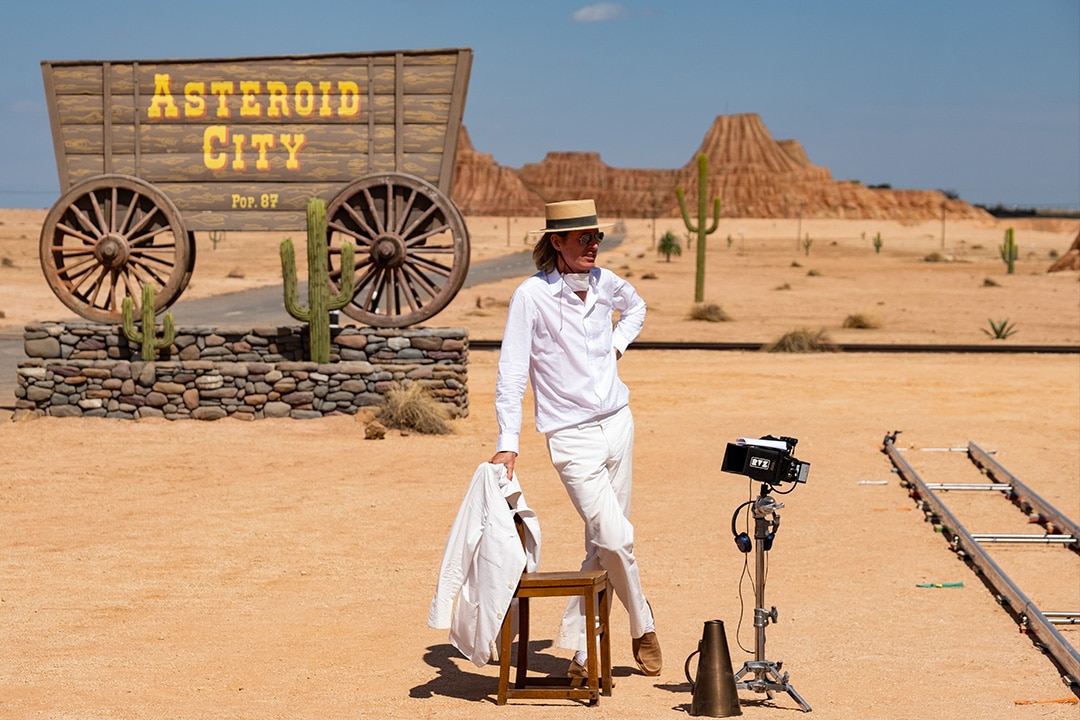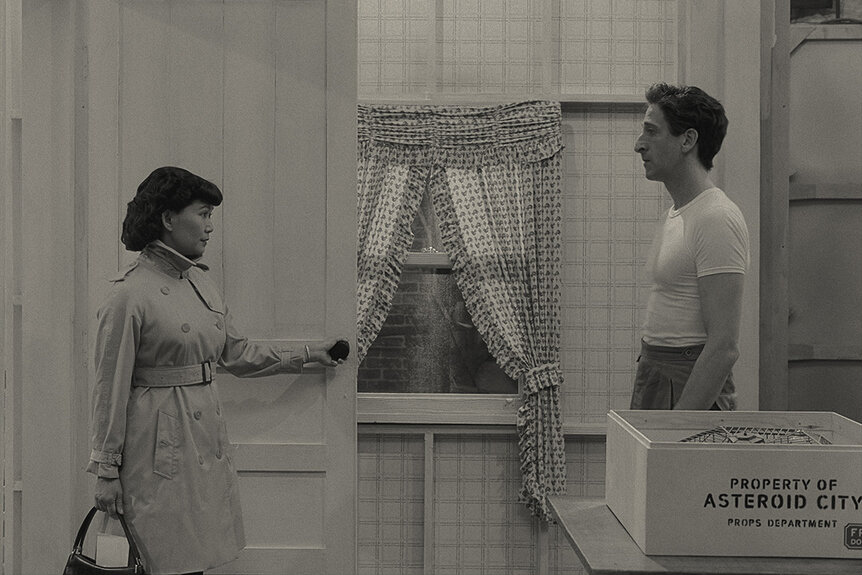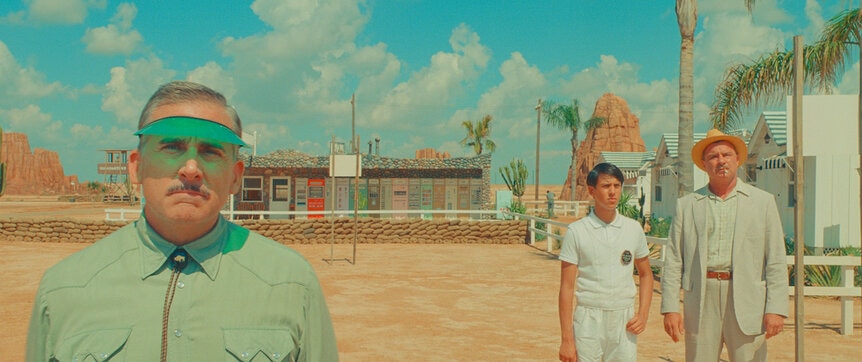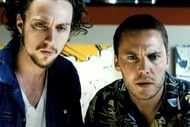Create a free profile to get unlimited access to exclusive videos, sweepstakes, and more!
How The Wizard of Oz Inspired Asteroid City's Production Designer and Wes Anderson
Production designer Adam Stockhausen pulls back the curtain on the visual magic happening in Wes Anderson's Asteroid City.

Sometimes artists meet and they just gel, igniting a lifelong collaboration of creation. For Adam Stockhausen, little did he know when he signed on as the supervising art director for Wes Anderson's The Darjeeling Limited, that the job would bloom into one of those career-changing partnerships. But starting with 2012's Moonrise Kingdom, Stockhausen stepped up as the production designer for Anderson on five more films including his latest, Asteroid City.
A quirky tale of ennui and aliens, Asteroid City is presented as technicolor film within a black and white play which is quite the design conundrum. Despite having established "a tremendous shorthand" with Anderson, Stockhausen is quick to clarify that doesn't mean that conceptualizing, and then bringing to life, the director's vision gets any easier with each film.
RELATED: Wes Anderson on Aliens and 'Apocalyptic' Vibes in Asteroid City
"It's funny because it's not really a shorthand about the look of things," Stockhausen told SYFY WIRE about his process with Anderson. "It's not about style stuff. That's not the questions that are on the table. The questions that are on the table when you're designing any movie, is how do we tell the story? What is the world? And what's the world of Asteroid City? And that's a big question."
Asteroid City — a sci-fi comedy drama from Focus Features with an impressive cast including Jason Schwartzman, Scarlett Johansson, Tom Hanks, Edward Norton, Adrien Brody, Steve Carell, and Hong Chau — is essentially a play-within-a-play story, Stockhausen said. "Asteroid City is a whistle-stop town in the American desert Southwest... but not really," he added. "It's actually a fictional place in a play which is taking place in the Tarkington Theatre, which is being filmed and broadcast. There's layers to this, so the questions at the beginning level are more about what does it mean to create this town? It's theatrical, right? But it's still incredibly satisfying as a play, in that place that we really feel the place."
Asked if he approached the crafting of the one-motel town as what the actors in the play imagine Asteroid City would look like in their mind, or if it's more of an existential representation, Stockhausen pondered the question for a moment and answered, "I don't know. But I think that the question is an important one."
He added that the question does line up with the questions that the movie is ultimately asking. "There isn't always an answer of whether it's in the minds of the actors in the story inside the Tarkington, or is it projecting out, while the audience is watching, what they're watching on stage, and filling in the blanks for themselves like every audience does. But I'm not sure I need to have an answer to that question. I just know that that's the question; that and many other things. So then I can go to town — no pun intended — making this place and letting it be as colorful and as vivid as can be."
With the whole town constructed from wood and paint and foam, including the rock formations in the distance, Stockhausen said he went back to the Golden Age of Hollywood to research how movies in the past created the impression of grand locales while really being constrained to the boundaries of finite Hollywood sound stages. In particular, The Wizard of Oz (1939) became a specific inspiration that he screen-grabbed frame-by-frame to show Anderson where the stages would end and the forced perspective flats would continue the perception of Oz extending out infinitely with the yellow brick road.
"I'm trying to forensically figure it out because I have very limited information of backstage shots from that movie," Stockhausen said of his research. "But it's so beautiful. And it's interesting because it's sort of unusual to do this super large format, forced perspective work [now]. It was scary for me because I don't really necessarily know that it was going to work every time. There's an element of, 'Let's just try it and see.'"
Through trial and error, the filmmakers kept playing with perspective in the distance until it read real on camera. "It's one thing if it's a little model, or a little cutout," he explained. "But when when something is 60 feet tall and it's not right, it definitely can get a little bit scary. Like we had to raise our horizon and actually make an artificial horizon to bring one of the pieces higher because it wasn't working. You could just tell that it wasn't far away and so we had to fix it."
RELATED: Wes Anderson's Asteroid City Taking Over New York and Los Angeles: How to Visit
And once it was all right, that set the stage for capturing Stockhausen's favorite sequence of the film, the long dolly oner shot that introduces the audience to the entire one-block town without a cut. "You come in on this shot which starts with the train passing and then it just turns and turns and flies and turns again, so it reveals the entire town. It's just a fun shot, but also terrifying because everything that we talked about, all of its exposed, all of it's on camera, all at one time, with no chance to fix anything. And so there was a huge amount of prep and planning that got poured into how to make that shot perfect. We shot it in not even a full day. But the entire process was months upon months upon months of planning all coming together to say, 'There you are, hands on the dolly. Let's go!'"
Asteroid City is now in theaters. You can buy tickets here.
















